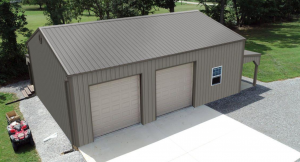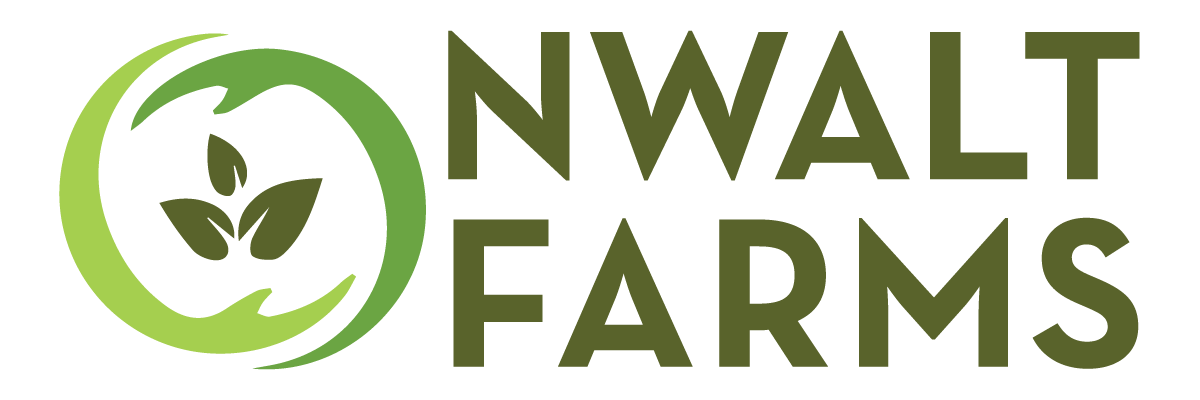 By Nathan Boone (Produce Grower, Food Safety Trainer and Agricultural Consultant including working with the NWA Land Trust on its Farmland Access and Support Programs)
By Nathan Boone (Produce Grower, Food Safety Trainer and Agricultural Consultant including working with the NWA Land Trust on its Farmland Access and Support Programs)
NWALT Farms – Berryville is the location of a new farmland lease program led by the Northwest Arkansas Land Trust. There are three 15+ acre tracts available for lease to new/beginning farmers interested in fruit and or vegetable production for wholesale or commercial sales.
One of the major investments in infrastructure at this property is the new wash/pack shed to provide growers with adequate post-harvest working space, cleaning equipment, cold storage and building efficiencies to enable larger-scale production. Every farmer knows that a large part of our production work is moving our harvested crops from here to there and eventually to market. For example, I was surprised one year when I did an assessment of our potato operation to discover that we were touching the potatoes 13 times before final sale! A more efficient system was needed!
With that in mind, let’s talk about the new wash/pack shed at NWALT Farms Berryville in terms of the how it will function for the growers:
- Flow
How people, produce, supplies, water and waste move through a wash/pack area is very important. The goal is to avoid backtracking (wasted steps), bottlenecks, clutter and potential cross contamination (clean produce coming into contact with incoming produce from the field.) The new wash/pack shed solves this basic problem with it’s large floor space of 40′ X 80′ combined with large overhead roll-up doors for easy access on both sides of the building. Cold storage (described below) as well as storage for supplies, a breakroom and a bathroom are all located on the perimeter of the wash/pack zone preserving a large central work area for farmers to organize their cleaning lines and unique approaches to wash/pack needs as their operations evolve.
- Flow of Product
After produce is in the wash/pack shed, it is smart to keep it moving from field to market in one direction to eliminate backtracking and cross contamination. Once it is washed, keep it moving upstream to a cooler or market and don’t look back (retrace steps). The new wash/pack shed will have finished concrete floors and floor trench drains making it ideal for moving large volumes of produce using hand trucks, pallet jacks and even forklifts once large harvests starts flowing in. The large access roll-up doors on both sides of the building as well as a carefully planned loading dock will allow farmers to easily move produce in and around the building quickly and efficiently from field harvest to final truck loading. No more crawling into the back of your pick-up bed or van to load veggies!
- Cold Storage
The new pack/wash shed starts out with 5 Coldbots (12′ X 12′) to provide growers with the maximum flexibility for different crops as well as efficient energy consumption and ease of use. As operations grow in volume, additional cold storage can be explored as needed.
- Flow of Water
Overall water use, drainage and the movement of water has been a major focus of the design. A lot of water is used to wash produce, harvest bins, market bins, equipment and fill dunk tanks as well as clean the entire wash/pack areas after a harvest day. Adequate drainage keeps water moving away from clean product and eliminates standing water which is both a safety and food safety hazard. The source of water for the wash/pack shed is clean well water.
- Produce Cleaning Equipment
At this early-stage prior in the project, we have selected basic cleaning lines and equipment to accommodate a potential range of produce operations. Once farmers are selected and operations are more clearly understood, specialized cleaning equipment can be explored especially if it would benefit all growers using the pack shed.
- Food Safety
Growers should think about each step of their production and post-harvest handling to manage and minimize food safety risks. I have found that the efficient flow of products, people and materials is compatible and complimentary to food safety goals. It is also crucial to start out with durable, cleanable food contact services (hygienic design) and dedicated cleaning systems, bins, and tools that make food safety easier to maintain. A food safety orientation also focuses on employees to create a culture of good personal hygiene and empowers risk management thinking so that each person can become a problem solver. Ultimately, all of this culminates in clear Standard Operating Procedures (SOPs) for post-harvest handling, storage, and clean-up. This food safety orientation can provide ownership and creative opportunities for employees increasing morale, productivity, and loyalty.
Included with this post are some renderings of what the new wash/pack shed will look like. Some are not to scale but will give you an idea of the layout and design. For more information about NWALT Farms – Berryville and the farmland lease program, please contact the NWA Land Trust at 479-966-4666 or email info@nwafarmlink.org.



